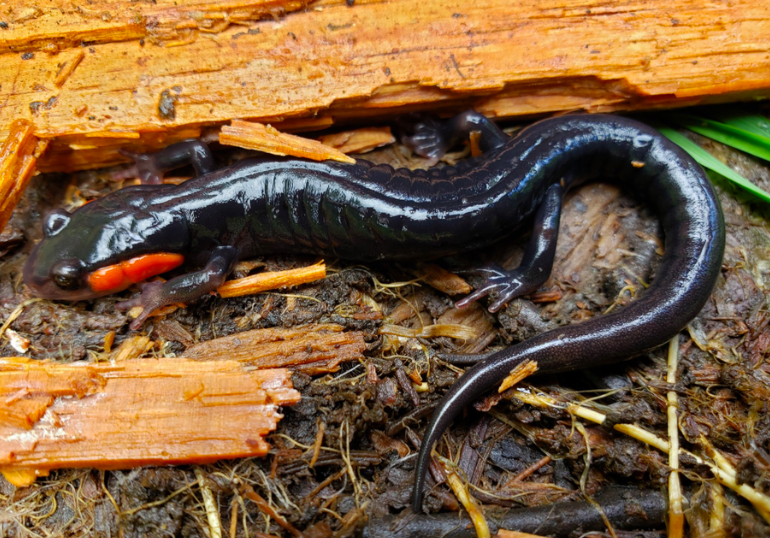
Red-cheeked Salamander/Jessie Snow/NPS.
The Red-cheeked Salamanders of Great Smoky Mountains National Park are superheroes.
Found only in this unique park unit, research has revealed that the salamanders can secrete a special, toxic substance to keep predators away.
Ranging from 3.5 to 5 inches long, the Red-cheeked Salamanders are generally dark gray in color, making their red cheeks and/or red legs really pop.
In a recent Facebook post, the National Park Service writes: “When attacked, this salamander can bite back and will release poisonous slime from the base of its tail.” Like many Iizard varieties, this salamander species also drops its tail to distract a would-be nemesis. Think that’s not enough for superhero status? They can also breath through their very skin!
Wait, but are they lizards? Good question, but no. Though they superficially look the same, lizards are reptiles covered in dry scales or scutes, while salamanders are amphibians with moist skin.
The Red-cheeked Salamanders are usually found in high elevations, including mountain summits, and visitors are warned to avoid touching them wherever they are spotted. The toxic ooze is harmful to humans.
Great Smoky Mountain National Park is a salamander hotspot, home to 30 of the United States’ 190 species. Of all the wildlife in the park, salamanders represent the majority of backboned animals, even surpassing human visitors.
Unfortunately, climate change is threatening the unique habitats they need to survive, especially at higher elevations. The decline of salamander populations causes reverberations across the food web; they are prolific eaters of forest insects. Scientists continue to study them closely, as these superheroes indicate the overall health of the mountain ecosystem.
The decline of salamanders is part and parcel of the overall decline in global amphibian species, even in protected areas like national parks. In the United States, the USGS estimates that amphibian populations are decreasing 3.79% every year. In addition to climate change, human development and pollution affect amphibian species east of the Mississippi as well as the Midwest, while chytrid fungus and other diseases decimate populations in the Northeast and New England. Pesticide use east of the Colorado causes further issues, while climate change affects the West Coast like it does the South.
Looking to safely see some of the Great Smoky Mountains amphibian varieties? Use the National Park Service checklist here. Just remember - no touching the Red-cheek’s!

 Support Essential Coverage of Essential Places
Support Essential Coverage of Essential Places






